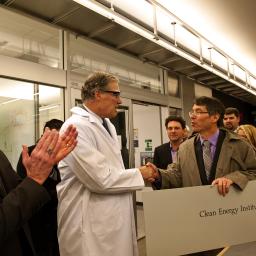A shocking diet: Researchers describe microbe that 'eats' electricity
A team of Harvard researchers showed that the commonly found bacterium Rhodopseudomonas palustris can use natural conductivity to pull electrons from minerals located remotely in soil and sediment while remaining at the surface, where they absorb the sunlight needed to produce energy.
Led by Peter Girguis, a team of researchers showed that the commonly found bacterium Rhodopseudomonas palustris can use natural conductivity to pull electrons from minerals located deep in soil and sediment while remaining at the surface, where they absorb the sunlight needed to produce energy.
"When you think about electricity and living organisms, most people default to Mary Shelley's Frankenstein, but we've long understood that all organisms actually use electrons - what constitutes electricity - to do work," Girguis said. "At the heart of this paper is a process called extracellular electron transfer (EET), which involves moving electrons in and out of cells. What we were able to show is that these microbes take up electricity, which goes into their central metabolism, and we were able to describe some of the systems that are involved in that process."
